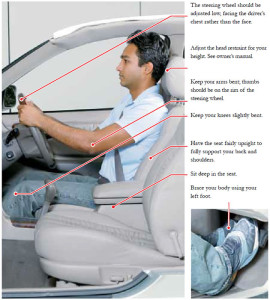NSW Driving Test – Vehicle Control
Your ability to control the vehicle is assessed by the way you handle the tasks involved.
OPERATING THE CONTROLS
Some of the driving tasks that the testing officer will observe and record are
listed here:
Adjust driver’s seat posture and steering column (if adjustable) to ensure you have good control of the vehicle.
Operate accelerator smoothly when accelerating and decelerating.
Operate brakes smoothly and effectively.
Coordinate clutch and gear lever to make smooth gear changes.
Select appropriate gear for the situation including when coming to a stop and parking the car.
Avoid over-revving on take off and gear changes.
Driver’s seat belt is correctly fastened, fitted and adjusted (low, flat and firm).
Apply a brake when starting the vehicle.
Prevent rolling back when starting on hills.
Use park brake correctly when preparing to secure the vehicle and ensure it is fully released when driving.
Steer with both hands on the steering wheel (except when using another control), using either ‘hand-over-hand’ or ‘pull-push’ method with hands on the outside of the steering wheel.
Use other controls such as indicators, windscreen wipers and demisters.
You must be confident in your use of all controls and be able to operate them without being distracted.

